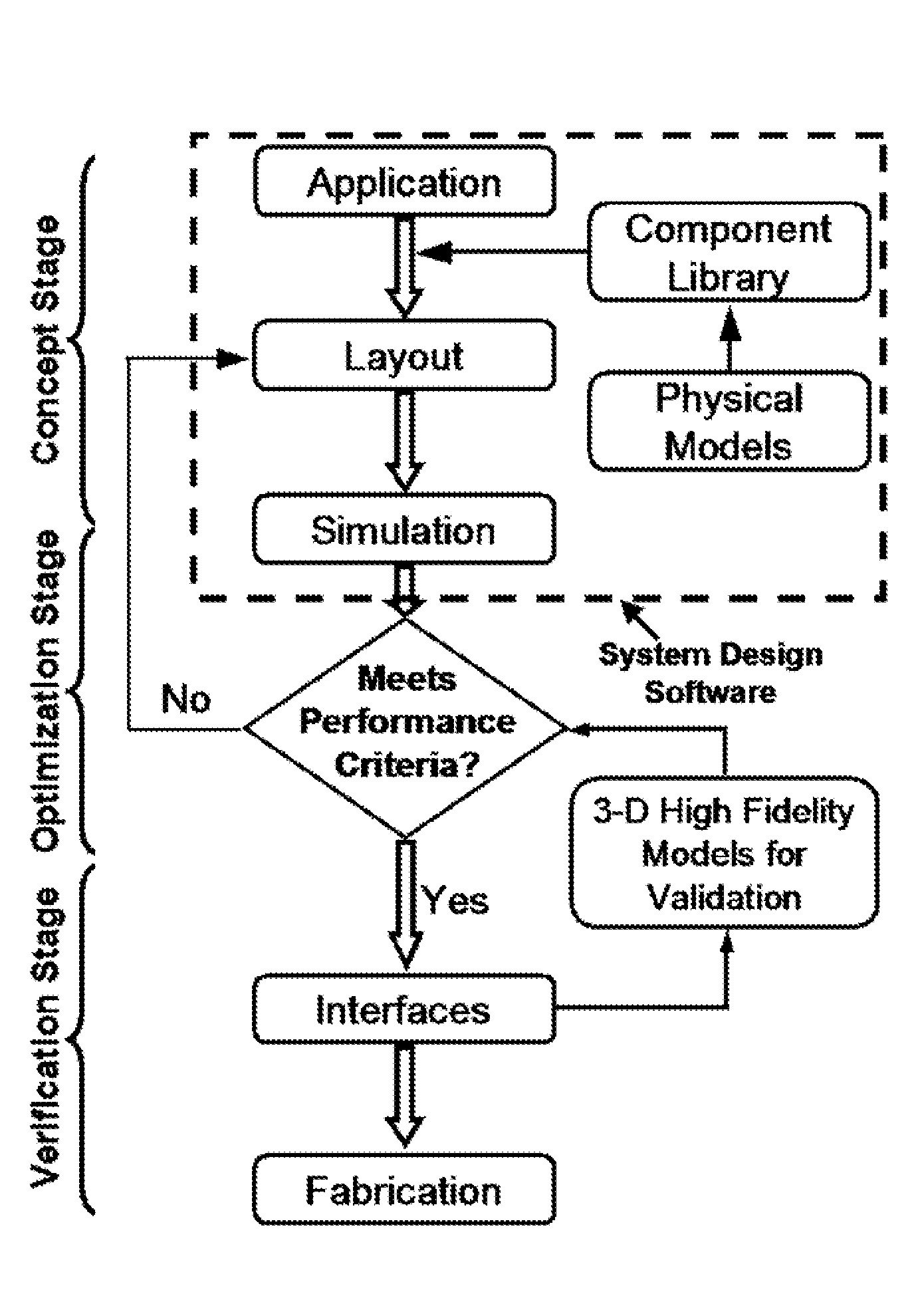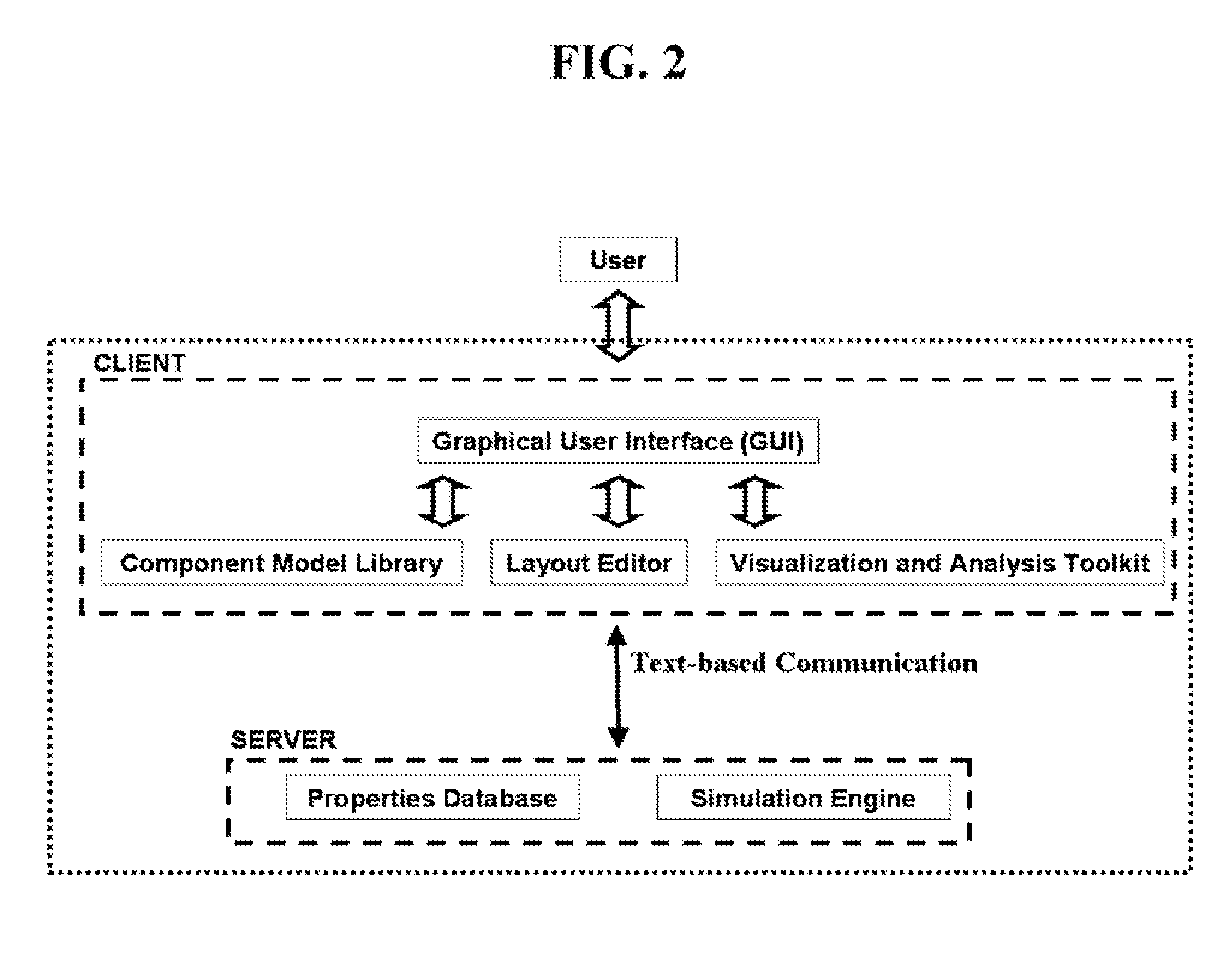Integrated Microfluidic System Design Using Mixed Methodology Simulations
a microfluidic system and simulation technology, applied in the field of integrated microfluidic system design using mixed methodology simulations, can solve the problems of inability to simulate the complete microfluidic system using these packages, costly delays in microfluidic systems designed using experiments alone, and inability to meet the requirements of microfluidic systems. the effect of cost reduction
- Summary
- Abstract
- Description
- Claims
- Application Information
AI Technical Summary
Benefits of technology
Problems solved by technology
Method used
Image
Examples
example 1
Micromixer Chip Simulation
[0227]The mixing of three reagents by a passive micromixer was modeled. FIG. 20A and 20B show the initial design and corresponding layout of the micromixer. The micromixer comprises four inlets and one outlet. Analytes A and B are pumped into the system continuously via inlets 1 and 3, while analyte C is introduced via inlet 4. Inlet 2 regulates analyte concentrations by introducing diluting buffer. There are two serpentine channels in the system that function as a micromixer to mix A and B, followed by mixing with C. Diffusion is the primary mixing mechanism in this design, and the level of mixing depends on the residence time, which in turn depends on the flow velocity and length of the serpentine channels. After creation of the layout (FIG. 20B), simulations were performed to predict the effects flow rate on concentration profiles at predefined detector locations. Analyte concentration profiles along the channel cross-section at detector locations D2 and...
example 2
Optimization of a RNA Extraction Chip
[0228]The operation of a cell lysis microfluidic chip was simulated and optimization parameters identified. FIG. 23A shows a PHAROS network representation of the biofluidic chip, which comprises lysis and capture chambers, reservoirs for cells, lysis buffer, elution buffer, and purified RNA and waste. These reservoirs are connected to off-card pressure pump(s) and a power supply using appropriate interfaces (not shown)
[0229]Cell lysis is the first step in RNA extraction from cells and directly influences the yield and quality of the isolated RNA. Cell lysis must be rapid and complete to prevent RNA degradation by endogenous RNases. The reagent lysis chamber comprises a Y junction channel followed by multiple serpentine channels. Mixing of the lysis with the cell sample must be complete to achieve, complete cell lysis and to minimize the associated pressure drop. PHAROS was used to create the layout of the chip and simulate mixing and cell lysis i...
example 3
Optimization of a Blood Oxygen Sensor Using ANNs and Multiphysics Models
[0230]Mixed Methodology modeling may include the use of artificial neural networks (ANNs) and / or one- or multi-dimensional multiphysics models. Some multiphysics models may require grid generation. The inclusion of these types of models in the PHAROS unified design environment is shown in FIG. 25.
[0231]The operation of a blood oxygen sensor assembled from standard microfluidic components was simulated using a Mixed Methodology approach to predict the pressure drop and biosensor signal for the full system. The design of the blood oxygen sensor is shown in FIG. 26A. FIG. 26B indicates the modeling techniques associated with each component in the sensor.
[0232]Table 2 compares simulation results from traditional 3-D modeling with the results of Mixed Methodology modeling of the oxygen sensor. There is nearly a 350-fold decrease in the computational time when moving from a full 3-D to a mixed methods simulation. A tw...
PUM
 Login to View More
Login to View More Abstract
Description
Claims
Application Information
 Login to View More
Login to View More - R&D
- Intellectual Property
- Life Sciences
- Materials
- Tech Scout
- Unparalleled Data Quality
- Higher Quality Content
- 60% Fewer Hallucinations
Browse by: Latest US Patents, China's latest patents, Technical Efficacy Thesaurus, Application Domain, Technology Topic, Popular Technical Reports.
© 2025 PatSnap. All rights reserved.Legal|Privacy policy|Modern Slavery Act Transparency Statement|Sitemap|About US| Contact US: help@patsnap.com



